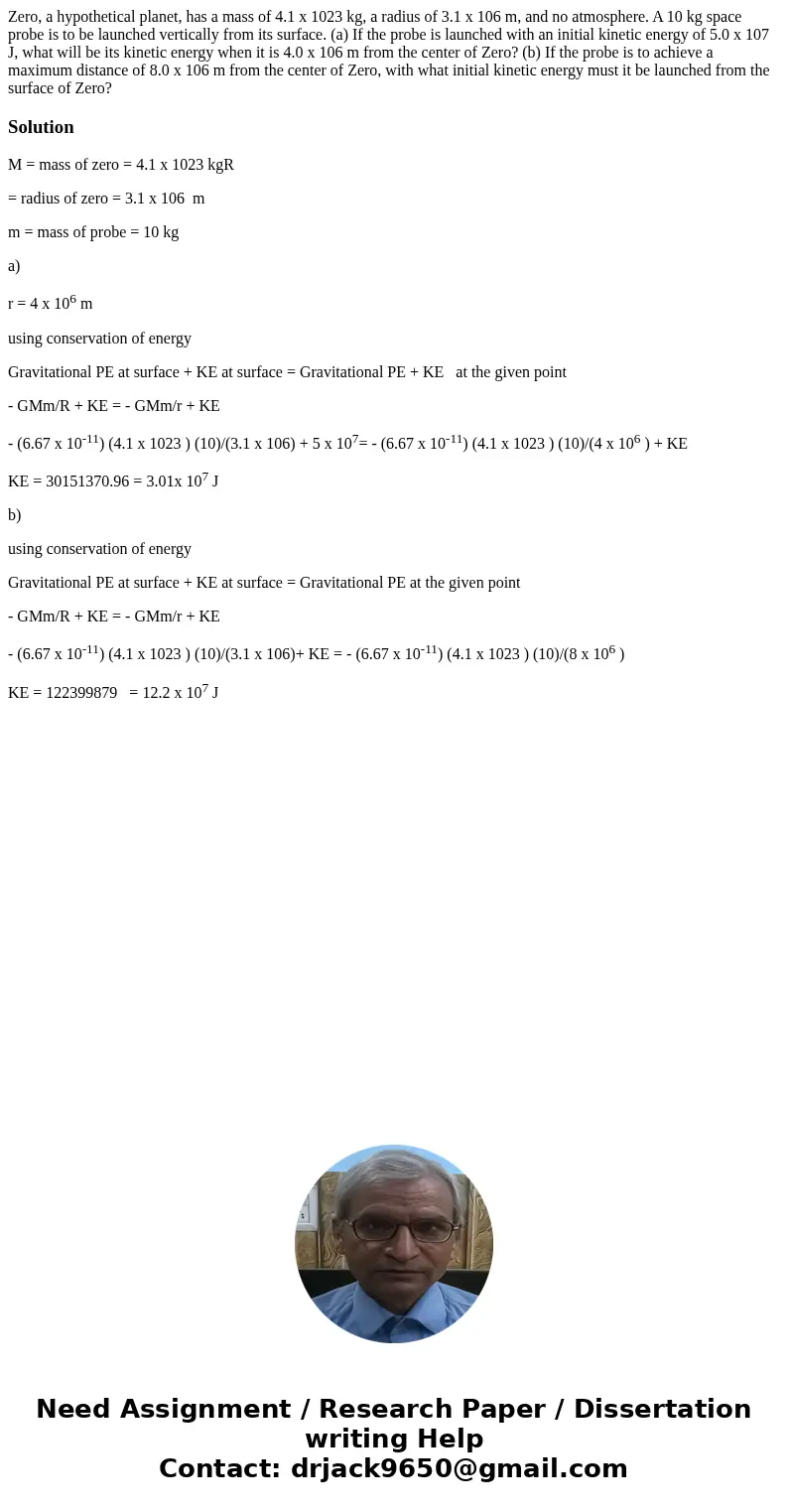Zero a hypothetical planet has a mass of 41 x 1023 kg a radi
Zero, a hypothetical planet, has a mass of 4.1 x 1023 kg, a radius of 3.1 x 106 m, and no atmosphere. A 10 kg space probe is to be launched vertically from its surface. (a) If the probe is launched with an initial kinetic energy of 5.0 x 107 J, what will be its kinetic energy when it is 4.0 x 106 m from the center of Zero? (b) If the probe is to achieve a maximum distance of 8.0 x 106 m from the center of Zero, with what initial kinetic energy must it be launched from the surface of Zero?
Solution
M = mass of zero = 4.1 x 1023 kgR
= radius of zero = 3.1 x 106 m
m = mass of probe = 10 kg
a)
r = 4 x 106 m
using conservation of energy
Gravitational PE at surface + KE at surface = Gravitational PE + KE at the given point
- GMm/R + KE = - GMm/r + KE
- (6.67 x 10-11) (4.1 x 1023 ) (10)/(3.1 x 106) + 5 x 107= - (6.67 x 10-11) (4.1 x 1023 ) (10)/(4 x 106 ) + KE
KE = 30151370.96 = 3.01x 107 J
b)
using conservation of energy
Gravitational PE at surface + KE at surface = Gravitational PE at the given point
- GMm/R + KE = - GMm/r + KE
- (6.67 x 10-11) (4.1 x 1023 ) (10)/(3.1 x 106)+ KE = - (6.67 x 10-11) (4.1 x 1023 ) (10)/(8 x 106 )
KE = 122399879 = 12.2 x 107 J

 Homework Sourse
Homework Sourse